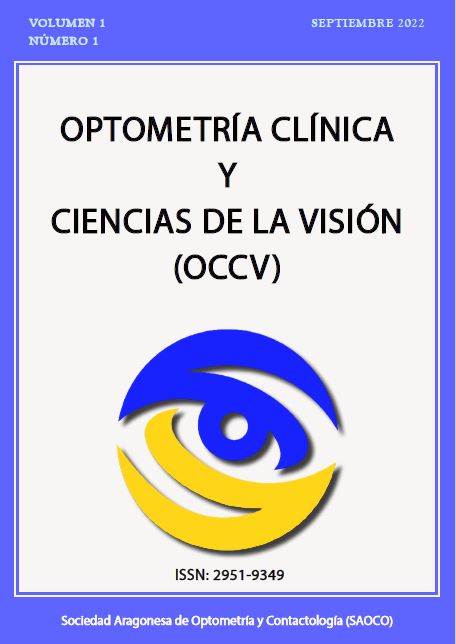Changes in Retinal Vascularization Assessed by OCTA in Type 2 Diabetic Patients with Diabetic Retinopathy
DOI:
https://doi.org/10.71413/4ah56444Keywords:
Diabetic Retinopathy, Retinal Vascularization, OCTAAbstract
Relevance: This study is of interest as it examines retinal microvascular changes in diabetic patients using optical coherence tomography angiography (OCTA). This novel and promising technique allows the detection of early microvascular signs in diabetes mellitus (DM), even before they are clinically evident.
Purpose: To study retinal vascularization in the superficial capillary plexus (SCP) and deep capillary plexus (DCP), as well as the choriocapillaris (CC) and the area of the foveal avascular zone (FAZ) using swept-source OCTA (DRI-Triton SS-OCT®, Topcon Corporation, Japan) in patients with type 2 diabetes mellitus (T2DM) with moderate diabetic retinopathy (DR) and without diabetic macular edema (DME).
Methods: The sample consisted of a total of 88 eyes, 54 of which belonged to the T2DM group aged between 42 and 86 years, and 34 eyes belonged to the control group aged between 47 and 83 years. They had maximum spherical ametropia of ±9.00 and ±3.00 D of astigmatism, with no other ocular pathology. All subjects underwent measurements with an autorefractometer, ocular biometry, visual acuity (VA), intraocular pressure (IOP), and OCTA in the SCP, DCP, and CC in the central, superior, temporal, nasal, and inferior sectors, and the FAZ area was also measured in both retinal plexuses. Additionally, anatomical alterations in the T2DM group were studied, and several clinical variables were collected, including the duration of the disease and parameters related to the metabolic control of DM. Non-parametric tests, specifically the Mann-Whitney U test for independent samples, were used to determine the presence of statistically significant differences (p<0.05) between groups.
Results: Regarding the study of vascular density using OCTA, the T2DM group showed statistically significantly lower results in the SCP compared to the control group in the Central, Superior, and Nasal regions, with no significant differences in the DCP and CC. Significant differences were found in the FAZ area, being larger in the T2DM group in the SCP (p<0.001), while no difference was found in the DCP between both groups. The most notable anatomical alterations in the retinal plexuses were the presence of peripheral disruption in the SCP (83.30%), the presence of microaneurysms in the DCP (81.10%), and flow changes in the DCP (81.10%).
Conclusions: The results of this study show differences in vascular density between the two groups studied, being lower in the T2DM group, with statistically significant differences at the level of the retinal SCP. Additionally, it was found that the FAZ is increased in the T2DM group in both retinal plexuses, especially in the SCP. T2DM patients with moderate DR present anatomical alterations in the SCP, DCP, and CC.
References
Cheloni R, Gandolfi SA, Signorelli C, et al. Global prevalence of diabetic retinopathy: Protocol for a systematic review and meta-analysis. BMJ Open. 2019;9(3):2015–9. DOI: https://doi.org/10.1136/bmjopen-2018-022188
Spaide RF, Fujimoto JG, Waheed NK, et al. Optical coherence tomography angiography. Prog Retin Eye Res [Internet]. 2017/12/08. 2018 May;64:1–55. DOI: https://doi.org/10.1016/j.preteyeres.2017.11.003
Kashani AH, Chen C-L, Gahm JK, et al. Optical coherence tomography angiography: A comprehensive review of current methods and clinical applications. Prog Retin Eye Res [Internet]. 2017/07/29. 2017 Sep;60:66–100. DOI: https://doi.org/10.1016/j.preteyeres.2017.07.002
Johannesen SK, Viken JN, Vergmann AS, et al. Optical coherence tomography angiography and microvascular changes in diabetic retinopathy: a systematic review. Acta Ophthalmol. 2019;97(1):7–14. DOI: https://doi.org/10.1111/aos.13859
Simó R, Stitt AW, Gardner TW. Neurodegeneration in diabetic retinopathy: does it really matter? Diabetologia. 2018;61(9):1902–12. DOI: https://doi.org/10.1007/s00125-018-4692-1
Cuenca N, Ortuño-Lizarán I, Sánchez-Sáez X, et al. Interpretation of OCT and OCTA images from a histological approach: Clinical and experimental implications. Progress in Retinal and Eye Research. Elsevier Ltd; 2020. 100828 p. DOI: https://doi.org/10.1016/j.preteyeres.2019.100828
Forte R, Haulani H, Jürgens I. Quantitative and qualitative analysis of the three capillary plexuses and choriocapillaris in patients with type 1 and type 2 diabetes mellitus without clinical signs of diabetic retinopathy: A Prospective Pilot Study. RETINA. 2020;40(2). DOI: https://doi.org/10.1097/IAE.0000000000002376
Alam M, Zhang Y, Lim JI, et al. Quantitative optical coherence tomography angiography features for objective classification and staging of diabetic retinopathy. Retina. 2020 Feb;40(2):322–32. DOI: https://doi.org/10.1097/IAE.0000000000002373
Lupidi M, Coscas G, Coscas F, et al. Retinal Microvasculature in Nonproliferative Diabetic Retinopathy: Automated Quantitative Optical Coherence Tomography Angiography Assessment. Ophthalmic Res. 2017;58(3):131–41. DOI: https://doi.org/10.1159/000471885
Couturier A, Mané V, Bonnin S, et al. Capillary plexus anomalies in diabetic retinopathy on optical coherence tomography angiography. Retina. 2015;35(11). DOI: https://doi.org/10.1097/IAE.0000000000000859
Hwang T, Zhang M, Bhavsar K, et al. Visualization of 3 Distinct Retinal Plexusses by Projection-Resolved Optical Coherence Tomogaphy Angiography in Diabetic Retinopathy. JAMA Ophthalmol. 2018;134(12):1411–9. DOI: https://doi.org/10.1001/jamaophthalmol.2016.4272
Lavia C, Feldman-Billard S, Erginay A, et al. Rapid macular capillary loss in patients with uncontrolled type 1 diabetes. Retina. 2020 Jun;40(6):1053–61. DOI: https://doi.org/10.1097/IAE.0000000000002557
Ciloglu E, Unal F, Sukgen EA, et al. Evaluation of Foveal Avascular Zone and Capillary Plexuses in Diabetic Patients by Optical Coherence Tomography Angiography. Korean J Ophthalmol. 2019;33(4):359. DOI: https://doi.org/10.3341/kjo.2018.0025
Conti FF, Qin VL, Rodrigues EB, et al. Choriocapillaris and retinal vascular plexus density of diabetic eyes using split-spectrum amplitude decorrelation spectral-domain optical coherence tomography angiography. Br J Ophthalmol. 2019 Apr;103(4):452–6. DOI: https://doi.org/10.1136/bjophthalmol-2018-311903
Additional Files
Published
Issue
Section
Categories
License
Copyright (c) 2022 Dña. Guisela Fernández Espinosa, Dra. Elvira Orduna Hospital, Dra. Isabel Pinilla Lozano (Autor/a)

This work is licensed under a Creative Commons Attribution-NonCommercial 4.0 International License.



